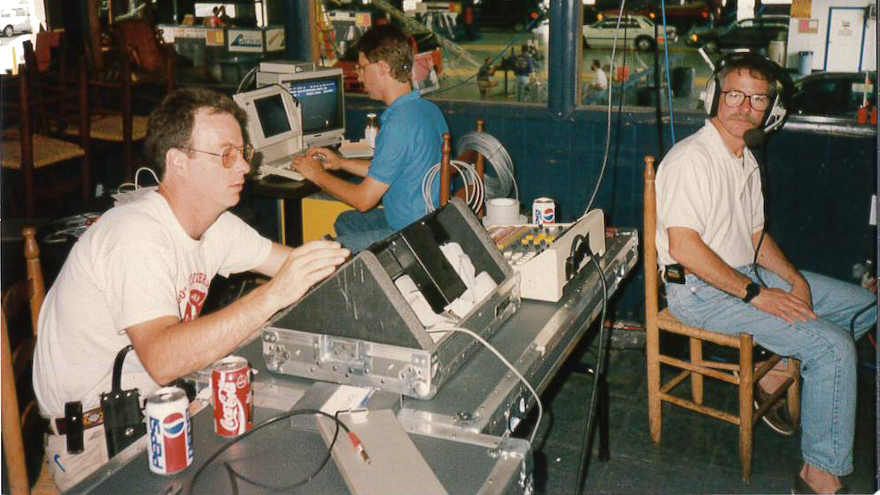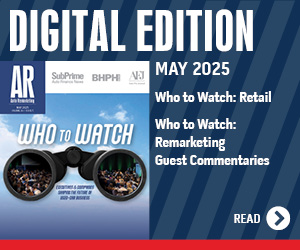Retrospective: Early days of simulcast auto auctions

The 1995 debut simulcast sale at State Line Auto Auction. Image courtesy of ServNet.
1 of simulcast's first steps to becoming grand slam
It is late summer 1995 in New York City — one year before its Yankees reignited their baseball dynasty and won their first of four World Series in five years, one year after its Rangers reached hockey’s mountaintop and its Knicks got oh-so-close in basketball.
And meeting in the singles finals of the U.S Open tennis tournament in the city that summer are, arguably, some of the generation’s greatest stars: Pete Sampras beating Andre Agassi in the men’s final, Steffi Graf defeating Monica Seles in the women’s.
What, you might ask, does that have to do with remarketing?
Not a whole lot, other than this:
Some of the satellite trucks at that 1995 tennis tournament in Queens would end up, weeks later and some 200-plus miles to the northwest, playing a pivotal role in what is described by at least one account as being the first car ever sold via simulcast.
Executive meeting sparks interest
ServNet has shared an account of the events that happened Oct. 12, 1995 at State Line Auto Auction in Waverly, N.Y.
A few months before that sale, the group’s report says, ServNet’s then-executive director Harry Beyer introduced Campus Group Companies chief executive officer Steve Campus to the auction group.
Jeff Barber, the owner of State Line Auto Auction, decided to give it a shot, as long as there was interest in the product.
With State Line having been a GM Sponsored Auction since 1989, Barber and Beyer approached then-GM Remarketing director Ford Sims, who gave them the greenlight to use this satellite technology at one of their sales.
Plan moves forward
Some serendipity in all of this: there were already satellite dishes available at GM dealerships, who would be the folks actually bidding at the sale. These stores used them for their parts departments, the story goes.
With this in play, the auction’s sales and marketing team sought out permission to use this existing equipment for remote bidding.
This foundation of the idea bubbled into a project: GM could hold a closed auction, and allow dealers who weren’t present in the actual lanes in Waverly to bid on cars remotely at the same time the sale was happening.
The report explains the technology involved in the project worked like this: Live video was streamed via satellite and audio was streamed through a phone bridge in Kansas. No Internet was involved.
And the satellite trucks transmitting that video signal? Those were the ones that had come from the aforementioned U.S. Open.
Results of sale & legacy
State Line included 400 vehicles at its sale that day, all of which sold. There were 125 bidders who were in the lanes at Waverly, with 15 bidders who chose to test out this new remote bidding from their respective dealerships.
Thirteen of those 15 ended up buying at least one car remotely, and they combined to purchase 45. The first was sold to Farnsworth Chevrolet of Canandaigua, N.Y., which ended up purchasing eight remotely that day. Bob Johnson Chevrolet purchased 12.
So how has the industry been impacted some 20 years later?
Consider this: in 2014, 17.9 percent of auction sales were Internet-based, according to the 2014 NAAA Annual Review.
Simulcast alone had a 13.8-percent share.
And for the record, Sampras and Graf happened to win a few more Grand Slam titles in the years since.
The Knicks, well, their time is coming.


